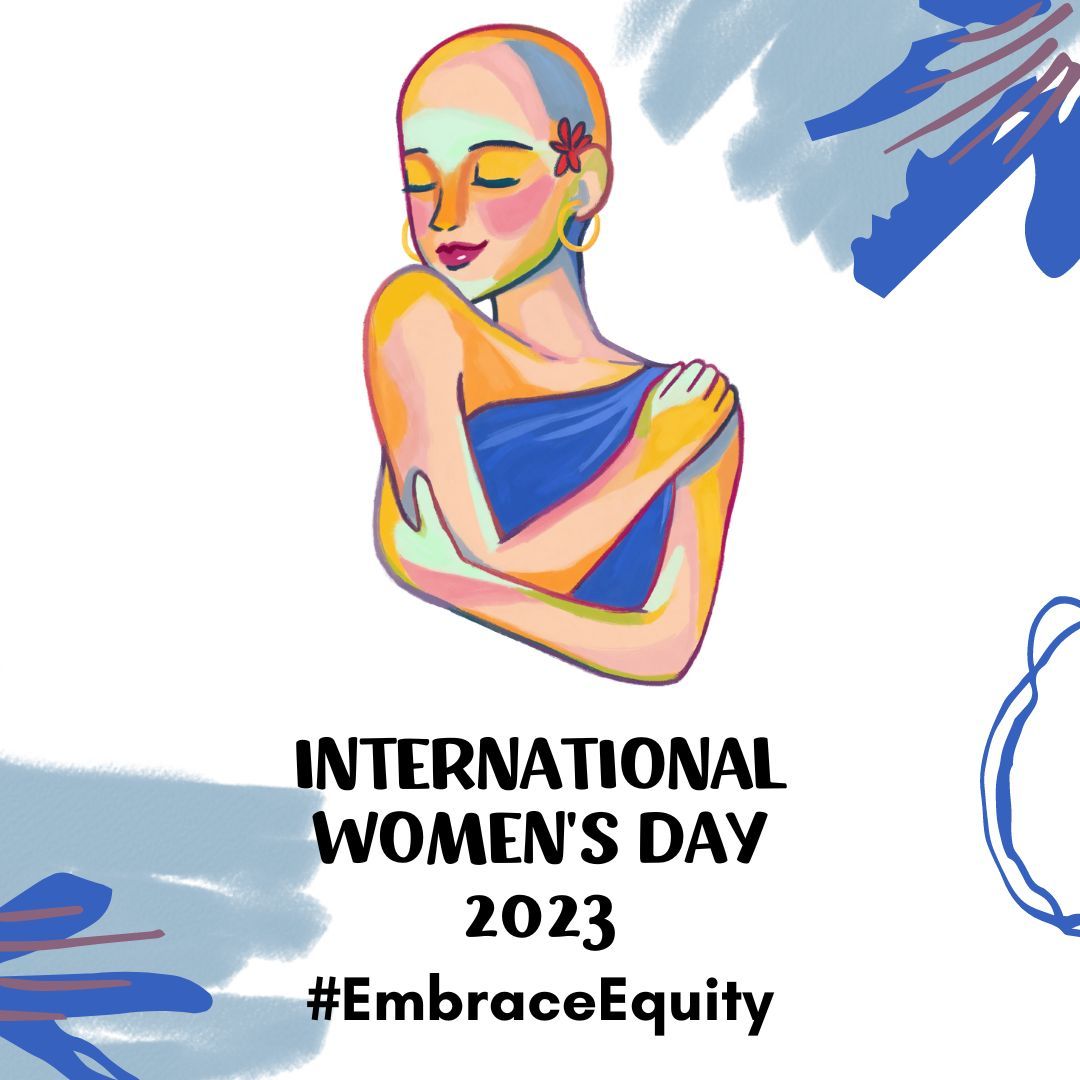Closing The Global Gender Gap: 132 Years Is A Long Wait

Image is from canva.com
In search of inspiration on International Women's Day, I refused to let remote work dampen my spirits and made a beeline for the Asia School of Business. It was a full day of events dedicated to tackling the most pressing challenges in achieving workplace gender equity. From thought-provoking discussions to powerful calls to action, the day was brimming with ideas on how we can all #EmbraceEquity and build a more inclusive future for everyone. Gender inequality is a pervasive issue in modern society, and one of the key ways to address it is by promoting gender equality in the workplace.
Women Still Continue to Face Numerous Challenges
Even decades into the 21st century, women continue to face an uphill battle in achieving parity with their male counterparts. The persistent gender gap remains a pressing issue that demands urgent and intentional action to create a more equitable and inclusive work environment.
Here are some examples of the challenges faced by women:-
- women are often paid less than men despite doing the same job.
- women face significant challenges in terms of work-life balance. Globally, women spend an average of 4.4 hours per day on unpaid care work, such as childcare and household chores, compared to 1.7 hours for men. This can make it difficult for women to balance work and family responsibilities, leading to a "double burden" of paid and unpaid work. This can often result in women being passed over for promotions or forced to choose between their careers and their families. In fact, a study by LeanIn.Org and McKinsey & Company found that women are 1.5 times more likely than men to cite "managing family responsibilities" as a barrier to advancement. This impacts women's career trajectories: the same study found that women are 24% less likely than men to have their first promotion to a managerial position and that this gap widens further for women of colour.
- Women face a lack of opportunities for advancement. A Cambridge University study reported that 43% of women aged 28-40 felt that opportunities to progress were not equal between men and women. Despite making up nearly half of the workforce, women hold fewer leadership positions than men. According to a report by McKinsey & Company, women make up only 24% of C-suite executives. This lack of representation at the top can have a detrimental impact on women's career growth and opportunities.
Strategies for Employers to Promote Gender Equity in the Workplace
Given the above, it is essential to embrace equity in the workplace to address these challenges. This means recognising and addressing the systemic barriers that prevent women from succeeding and taking proactive steps to create a more level playing field. Here are a few pointers:-
Equal pay audit. Employers can conduct regular pay audits to ensure employees of different races and genders are paid fairly for their work. This will also encourage pay transparency.
Flex work. Employers can implement work-life balance policies, such as flexible schedules and paid parental leave. Flexible work schedules are becoming increasingly popular in today's workforce, and for a good reason. They allow employees to have better work-life balance, positively impacting their overall wellbeing and job satisfaction. Flexible work schedules can be especially beneficial for women who are mothers, as it can help them balance their work and family responsibilities more effectively.
According to a study published in the Journal of Marriage and Family[1], flexible work arrangements, such as flexible schedules, telecommuting, and job sharing, are associated with greater job satisfaction, less work-family conflict, and lower levels of stress among working parents, particularly mothers. The study further echoed that women who had the opportunity to utilise flexible work options experienced greater job satisfaction and less conflict between work and family obligations [2] compared to women who didn't have access to such arrangements.
A research paper published in the Journal of Occupational Health Psychology[3] discovered that working mothers with flexible work arrangements experienced reduced levels of emotional exhaustion. This led to higher job satisfaction and a decreased likelihood of quitting their job. A report from McKinsey & Company further corroborated that companies with robust gender diversity initiatives, including flexible work arrangements, were more likely to retain women in senior leadership positions. Those findings can significantly benefit companies, as research shows that gender-diverse companies tend to outperform their less diverse counterparts [3].
Overall, research suggests that offering flexible work arrangements can have a positive impact on employee wellbeing, job satisfaction, and retention, particularly for women who are mothers. Companies can reap the benefits of a happier, more engaged workforce by creating a culture of inclusivity and support for working parents. Surveys carried out by some of the world’s most influential institutions, including the World Bank, Goldman Sachs, the International Monetary Fund, Ernst & Young, the World Economic Forum, McKinsey & Company, and others, have conspicuously demonstrated that women’s full economic participation leads to greater competitiveness.
Despite numerous positive research and reports, why do organisations continue to lag in taking action?
You may also like these:
Diversity, Equity and Inclusion Starts With Leaders
Diversity, Equity and Inclusion - The Power Call
Women need mentors. Employers need to create mentorship and sponsorship programs that help women progress in their careers and provide them with the support they need to succeed.
Mentoring has assisted women in gaining insight into their personal strengths, capabilities, and work preferences, further identifying areas where they may need to develop or change to succeed in leadership roles. Mentoring also provides opportunities to connect with senior leaders in their field, which is particularly helpful as women move up the leadership pipeline. Mentoring in such instances provides them with guidance and support to help them navigate the challenges and responsibilities of leadership roles.
Women must also keep a positive outlook and understand that their mentors will be more engaged and helpful if they are enthusiastic, frank, and involved in the process.
Women who received mentoring were more likely to have higher salaries and greater job satisfaction than women who did not.
Women can demand their rightful compensation. Women can advocate for themselves by negotiating for fair pay and seeking leadership opportunities. When women advocate for themselves, they remove gender pay gap barriers.
However, research has shown that 20% of women never negotiate salaries. You may wonder why women don’t undertake this exercise. Do they feel uncomfortable? Could this be due to deeply entrenched societal roles of women? In many cultures, girls are taught to prioritise relationships, display concern for other's wellbeing, and be accommodating from a young age. Research has shown that women see negotiation as a chore and/or fear that negotiation may come with a fear of being disliked.
Women must step out of this fear of backlash and actively work on their negotiation skills to have positive outcomes. However, knowing precisely what you want and what is important to you is imperative. This strategy and doing all other relevant homework are factors in successful pay negotiations.
Studies have also shown that women perform better if they have had training or experience at the negotiating table. Women tend to achieve more favourable terms when they have spent more time at the bargaining table.
Men as allies. Many companies make the mistake by focusing on women to fix the gender problem. However, men can become allies by championing women's rights and actively working to create a more inclusive workplace. To do so, men must be part of the conversation and solution. They need to be roped into supporting policies promoting gender equality - such as equal pay for equal work and family-friendly work arrangements. Men can be allies not only at work but also at home.
Research has shown that the impact of male allies in companies is a critical component of a company’s diversity and inclusion efforts. For example, a study by McKinsey & Company found that companies with more diverse leadership teams had higher financial returns than those with less diverse teams. As Robert Zoellick, former director of the World Bank, said,
“Gender equality is the right thing to do. And it is also smart economics.”
If you are a man at your workplace, what can you do? To start, you can have honest conversations. Ask your female colleagues about the challenges they face at work and at home. Listen to their stories and be their advocate. Research suggests that stories embed in our brains 20 times more efficiently than facts and figures. Stories build understanding and increase empathy. You can also recruit more women (to raise the visibility of women leaders), evaluate performance justly and actively promote women, provide constructive criticism like you would with your male colleagues and stop manterrupting! (google it).
You should also challenge or call out any sexist behaviour or language, break ingrained gender stereotypes, correct unconscious biases, stop micro-aggressions in your organisation and start having respectful working relationships with your female colleagues.
You should also model alternative work-life strategies by detoxifying the flexibilities afforded to work mothers and others who need flexible schedules. For men who are “lagging” or “learning,” organisations should provide unconscious bias training, diversity awareness discussions, or dissemination of basic information.
It's paramount to understand that supporting women as an ally involves personal actions and bringing about systemic transformations. Male leaders can use their privilege and influence to set and push for policies and practices that promote gender equality. They can also establish accountability (encourage genuine male advocacy and reward them) and act as role models (yes, volunteer to plan the next office function and not dispose of the responsibility to your female colleague). Those actions can be done within their workplaces and, more broadly, in society. The conduct can include advocating for government policies that promote gender equality, such as paid parental leave and affordable childcare. By doing so, they can help to create a more equitable and just society for all.
Parting words
As I exited the IWD celebrations, my heart ached, thinking of the future of girls and women. Whilst I laud the initiatives that have been taken and where we are today, it is certainly not enough! Yes, we have accomplished incredible feats, like building rockets and overcoming complex historical challenges, yet we still struggle with gender inequality issues. Leaders must set a timeline, as women cannot wait for more than a century to close the global gender gap.
Good leaders don’t just talk; they take action and get results.
Leadership
Tags: Women & Leadership, HR, Transformation & Change, Diversity, Equity & Inclusion, Values, Building Functional Competencies, Empathy, Executing Leadership
References:
[1] Hill, E. J., Hawkins, A. J., Ferris, M., & Weitzman, M. (2001). Finding an extra day a week: The positive influence of perceived job flexibility on work and family life balance. Journal of Family Psychology, 15(3), 395–407.
[2] Allen, T. D., Johnson, R. C., Kiburz, K. M., & Shockley, K. M. (2013). Work–family conflict and flexible work arrangements: Deconstructing flexibility. Personnel Psychology, 66(2), 345–376.
[3] Cho, E., & Kim, S. (2015). Is flexible work enough? The impact of flexible work on work–family conflict, job satisfaction, and turnover intention for working mothers in South Korea. Journal of Occupational Health Psychology, 20(4), 555–566.
Kiran Tuljaram, formerly the Lead Editor at Leaderonomics, now brings her expertise to a Culture and Engagement team at a telco. With a background as a trained lawyer, she spent nearly a decade in the banking industry before venturing into entrepreneurship. Following her tenure as a Legal Manager at a bank, Kiran founded and successfully ran multiple businesses, including her own fashion accessories label. Alongside her professional pursuits, she is a devoted mother to three girls. Her diverse experiences in banking, entrepreneurship, motherhood, employment, social work, and as a managing director have given her invaluable insights and a unique perspective on the critical role of leadership in organisations.





